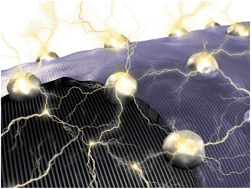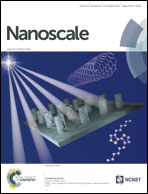Designing an ultrathin silica layer for highly durable carbon nanofibers as the carbon support in polymer electrolyte fuel cells
Abstract
A critical issue for maintaining long-term applications of polymer electrolyte fuel cells (PEFCs) is the development of an innovative technique for the functionalization of a carbon support that preserves their exceptional electrical conductivity and robustly enriches their durability. Here, we report for the first time how the formation of a partially coated, ultrathin, hydrophobic silica layer around the surfaces of the carbon nanofiber (CNF) helps improve the durability of the CNF without decreasing the significant electrical conductivity of the virgin CNF. The synthesis involved the adsorption of polycarbomethylsilane (PS) on the CNF's sidewalls, followed by high temperature pyrolysis of PS, resulting in a highly durable, conductive carbon support in PEFCs. The Pt nanoparticles are in direct contact with the surface of the carbon in the empty spaces between unevenly coated silica layers, which are not deposited directly onto the silica layer. The presence of a Pt nanoparticle layer that was thicker than the silica layer would be a quite advantageous circumstance that provides contact with other neighboring CNFs without having a significant adverse effect that deeply damages the electrical conductivity of the neighboring CNF composites with the silica layer. Furthermore, the ultrathin, hydrophobic silica layer around the surfaces of the CNF provides great potential to reduce the presence of water molecules in the vicinity of the carbon supports and the ˙OH radicals formed on the surface of the Pt catalyst. As a result, the CNF with a 5 wt% silica layer that we prepared has had extremely high initial performance and durability under severe carbon corrosion conditions, starting up with 974 mA cm−2 at 0.6 V and ending up with more than 58% of the initial performance (i.e., 569 mA cm−2 at 0.6 V) after a 1.6 V holding test for 6 h. The beginning-of-life and end-of-life performances based on the virgin CNF without the silica layer were 981 and 340 mA cm−2 at 0.6 V, respectively. The CNF having a silica layer had long-term durability which was superior to that of the virgin CNF.


 Please wait while we load your content...
Please wait while we load your content...